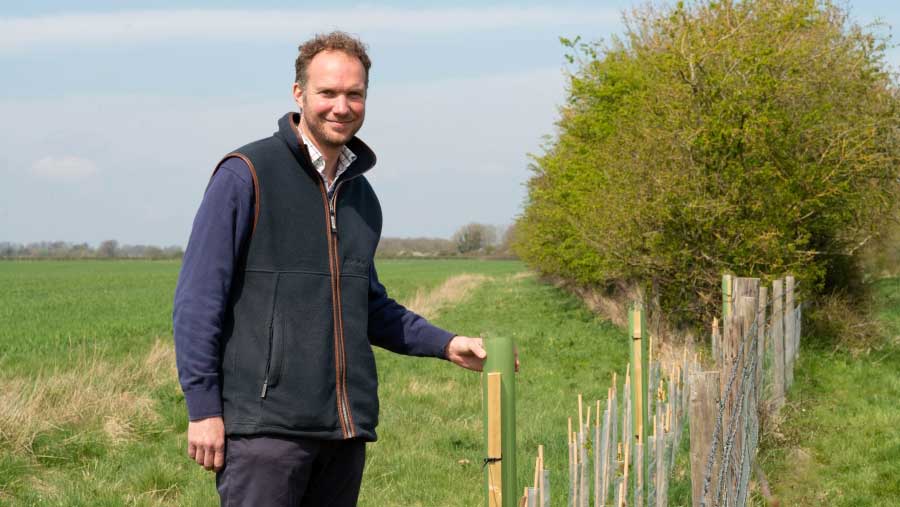Advertiser content
Ben’s Story: Trees can benefit wildlife and food production
More trees in the countryside doesn’t have to mean a choice between forest and farmland.
In field margins and boundaries, in unproductive corners and near watercourses, trees can bring a host of benefits – and there’s no need to take valuable land out of food production.
For Ben Butler, director of the 1,000-acre Manor Farm in Avebury, Wiltshire, balancing a profitable working farm while doing his bit for wildlife and conservation is “hugely important”.
“Should we be producing food or giving up farmland to wildlife?” he asks.
“I think you can do both. We have been producing food on a good scale… but you don’t have to farm right up to the fence line. There is a place for wildlife.”
The farm, which has been in the Butler family since 1937, is a mix of around 750 acres of arable and 250 acres of grassland. The family also raise beef cattle and graze ewe lambs.
“Talking to the older generations, they recall boundaries of fields being hedged,” Ben recalls. “We felt it would be nice to put it back.”
Ben applied for the Woodland Trust’s MOREhedges scheme in the spring of 2021, with 250m of native hedgerow trees delivered and planted last Christmas, including a mix of blackthorn, crab apple, dogwood, dog rose, field maple and hazel.
“The saplings had all been properly spiralled, caned and tree sheltered. I couldn’t fault any of the materials, plants or the process. I wouldn’t have a second thought about going back to the Woodland Trust.”
Ben’s long-standing interest in nature-friendly farming had already seen an increase in birds, flora and fauna – and the new planting will further enhance this by providing shelter and corridors for wildlife.
“Wildlife is a benefit to what we do,” he says. “It’s good for the image of the industry and it’s good for the environment.
“The hedges act as a corridor, taking wildlife back to the copse rather than just being open landscape. My dad recalls with pride hedges he planted in the early 80s, which are now coming up nicely.”
If, like Ben, you’re looking to create homes for wildlife, MOREhedges offers the advice and support you need to plant with confidence.
With a simple application process and choice of hedgerow mixes, the Woodland Trust can supply the trees and protection — and cover up to 75% of the cost.
MOREhedges is funded by Lloyds Bank to support sustainable farming.
Applications for this season close November 1st – apply now to receive your trees this winter: woodlandtrust.org.uk/plant
Provided by
Trees can maintain or even enhance the farm’s main agricultural output while improving the resilience of the business and simultaneously helping to protect soils, rivers, biodiversity, and climate.
Systems can be designed to avoid the potential trade-offs that occur in many modern farming systems between food production and public goods, like clean air.
How can the Woodland Trust help
Our advice and funding can help you to integrate trees into your farming system. With a bespoke plan designed for your individual business, we can offer up to 100% funding.
For more information on the funding available, please visit:
Tree planting – Woodland Trust
For more information on agroforestry, please visit:

